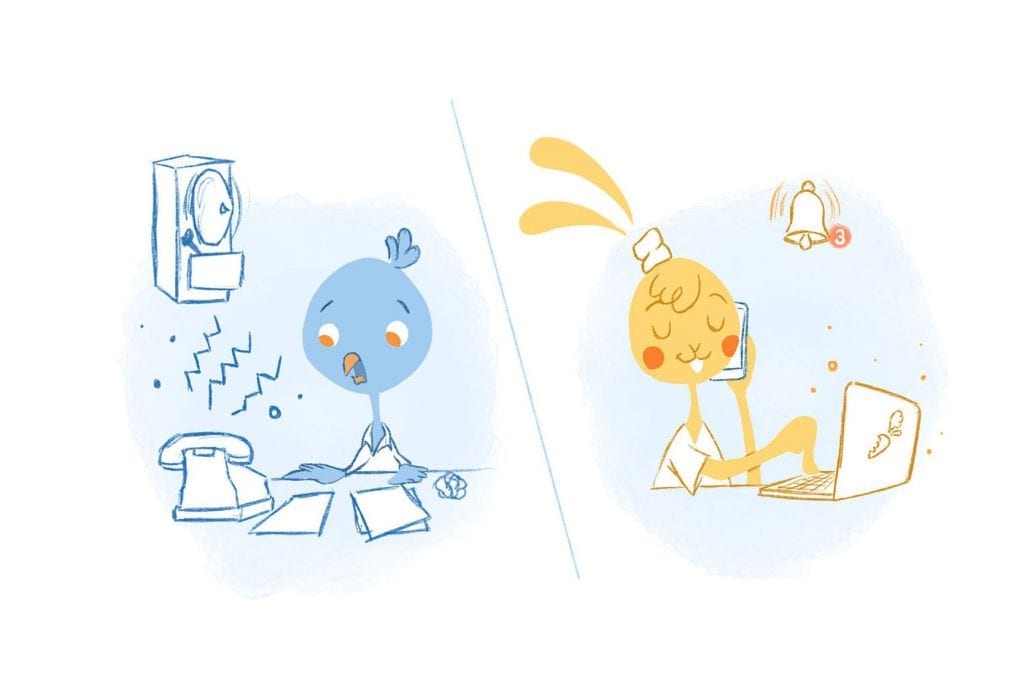

What am I going to wear to work today? Believe it or not, that is one of the most important questions you can ask yourself each morning. What you wear affects how people perceive you as well as your performance at work.
Now more than ever, companies are giving their employees freedom over their attire. The COVID-19 crisis has made remote work the norm for many team members, some of whom are happy to stay in their pajamas.
But just because you have that freedom doesn’t mean that any outfit will do. You may still need to look the part for that investor call. Perhaps wearing clashing colors makes you self-conscious, which can slow you down. But think about how the really successful people you know dress? Who do you admire? Does your respect ever crossover into what they are wearing? Consider how the world views individuals –in the movies, someone who is a success is almost universally portrayed with finer clothing.
You don’t have to spend a lot of money — nor do you have to wear “brands” to look dressier and more successful. But a nice jacket will always differentiate the wearer as a higher class person, or at least one who cares to look their best.
As long as your boss is OK with your outfit — it is your choice. But if you want to maximize your productivity, it’s essential to:
Be intentional.
With the freedom to choose your work attire comes responsibility. But be intentional about your choices.
Start by thinking through your goals. Some basic priorities of life include physical and mental health, good relationships, happiness, comfort, and security. And it’s smart to consider the ways that your work attire relates to these.
If the clothing you wear is tied to your sense of belonging, then wear clothing that enhances that sense. If you value comfort above all else, wear the things that make you the most comfortable. If a particular clothing item gets you in a good mood, then put it on by all means.
When you know what kinds of clothing gets you closer to your priorities, you get a more profound sense of your identity. And when that sense is secure, you have a security that’s difficult to take that away from you.
Consider your company/industry culture.
Even if your company doesn’t specify dress requirements, there might be clothing norms that have developed over time that are difficult to transgress. These norms may also be established by the industry that you work in.
For example, tech industry jobs are generally more casual than insurance jobs. So if you work at a tech start-up, you may not want to wear a three-piece suit. At the same time, if you work in a more traditional work environment, going too casual may raise some eyebrows.
With that being said, there may be reasons to break the norm. Research has shown that dressing down a bit in a formal environment can increase your productivity. A change in your attire is to distinguish yourself from the group and gives you a sense of efficacy.
Your comfort level with how your industry dresses is an essential clue as to whether you’ll be happy in that line of work. That is a broad statement — and general comments — often become false over time. We can see the former orange t-shirted Mr. Zucherberg donning a suit and appearing quite at home. Being a part of a community is great, but not necessary. You shouldn’t sacrifice your sense of self if you don’t want to. But ask yourself, “should I be dressing differently?”
Consider the occasion.
Not every day of work is the same. Your default work outfit may not cut it when you have to meet with a particular client. Likewise, your typical style may change if you work outside the office on certain days.
Also, sometimes you need a boost in confidence at work to maintain productivity. Other times, you need to be more relaxed to accomplish your tasks. These two moods are key factors in determining your performance.
When in doubt about how you should dress for an occasion, ask around. Otherwise, you may make the wrong assumption about what’s expected in the situation.
Don’t forget the details and accents.
Clothing isn’t the only thing when it comes to dressing for work. Some details and accessories contribute to your overall look.
Maybe there’s a unique pin that represents a cause that’s important to you. Or perhaps your look is never complete without a hat. Accents like these can add a touch that personalizes your work attire. You might opt not to wear makeup to work, or maybe you need to go through that process to get into a work mindset.
The colors you choose can also have a profound effect. The color grey, for example, is associated with passivity. Colors like red and green, blue, and yellow have more positive, energetic associations.
Don’t spend too long deciding.
When you are deciding what to wear, the one thing you don’t want to do is waste too much time deciding. You only have so much time in a given morning. Clothing is just one of many choices you need to make.
What if you struggle to get things together in the morning? Many people select their clothing the night before to prevent that feeling of fatigue that comes from indecision. When you know what to wear, you can seamlessly transition from your morning routine into your workday.
The clothes you wear are an extension of who you are. They can also be an extension of how you work.
Every outfit is appropriate sometimes, just like it’s inappropriate at other times. Make the right choice for you, your job, and your personal productivity.











Max Palmer
I'm Max, and I love helping businesses we work with expand their businesses online. Growth potential is what we strive for! I help with press, productivity and overall business needs for business owners.